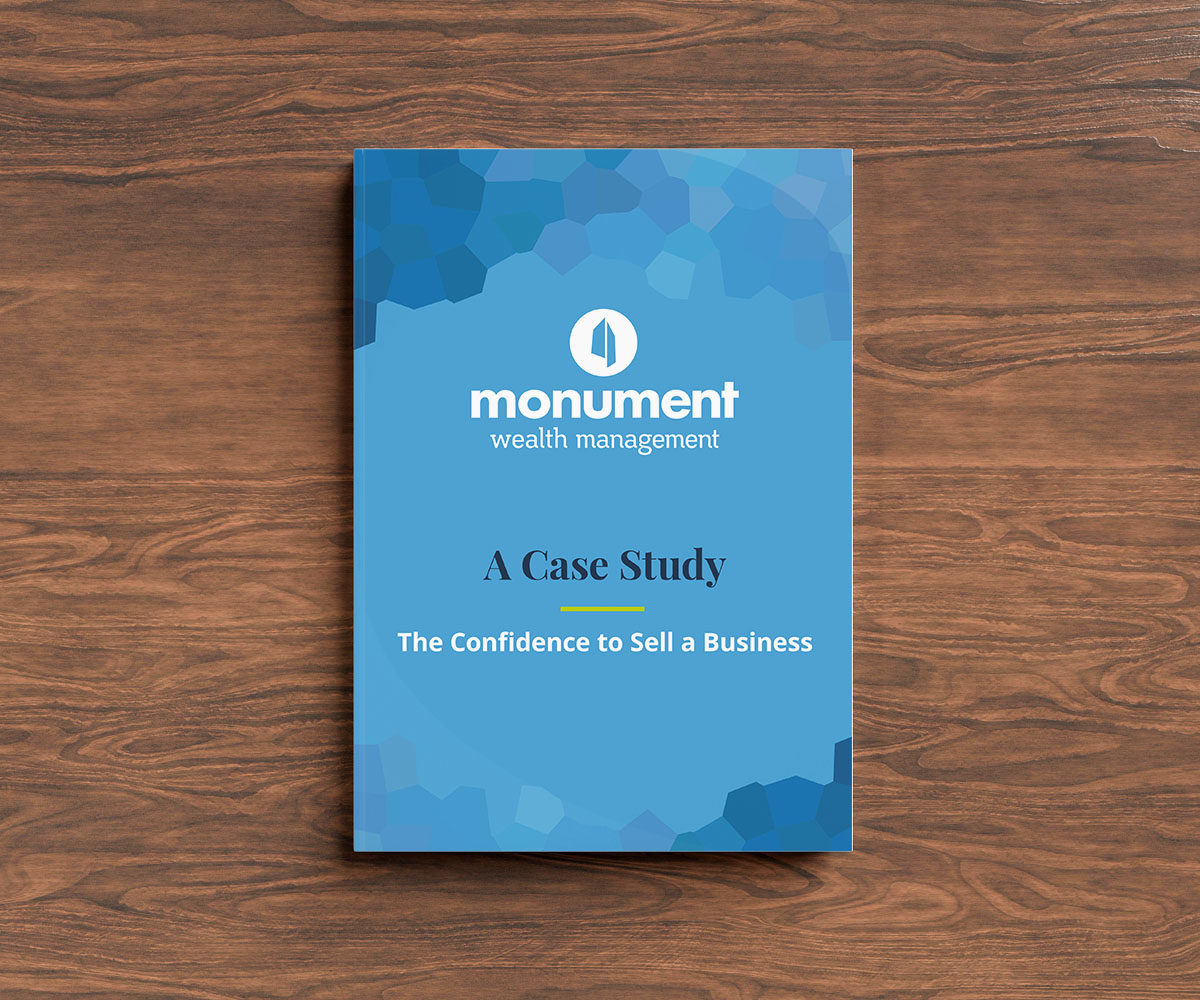Monument Wealth Management Articles
Retirement Plans for Business Owners (2024)

Share on your favorite platform, or by email
If you own a business and don’t save for a future retirement because you think your business is the “goose that laid the golden egg”, you are missing opportunities to reduce your taxes now, grow your money over time, and decrease your concentration risk as a business owner. I get it, your business is successful, and you are planning for a big increase in your liquid net worth in the future when you sell. Why save money now, especially in an account that will limit your current access to capital?
Here’s why…
Business owners are on the hook for a lot: the full 15.3% self-employment tax, the cost of healthcare, building your own nest egg without the matching employer contributions to retirement plans often referred to as “free money” for employees. It’s no wonder that investing for retirement isn’t a top priority for some business owners who are busy trying to grow their business’ value.
However, contributing to specific retirement vehicles can put more money in your pocket now with “above the line” tax deductions (regardless of whether you itemize on your return) and, in some cases, tax credits to offset the costs of starting a new plan, thanks to the original Secure Act and the enhanced Secure Act 2.0. Between lower taxable income, the power of compounding to grow wealth, and tax-deferred growth on your contributions over time, retirement accounts quickly become a more appealing option than a savings account, taxable accounts, or hoping for the best when you sell your business.
Beyond the current and future financial benefits, getting serious about a retirement strategy will help you put a solid plan in place and provide a sense of security, given an unpredictable future.
The decision to take action and make a change in your saving habits is the first in a string of decisions, which we’ll walk through below. From there, you must decide which vehicle is right for you given your circumstances and goals, both immediate and longer-term.
If you own a business, here are 3 considerations to keep in mind when assessing retirement plans:
1. Do you have employees?
A solo 401(k) is a one-participant plan—meaning you can’t contribute to one if you have W-2 employees. You can only use this plan to cover yourself and your spouse if they earn income from the business.
With IRA-based plans (SEP & SIMPLE), you can contribute whether or not you have employees. However, you can’t exclude employees from the plan and you must make contributions to IRA-based plans at the same rate you do for yourself. (There is some flexibility with SIMPLE IRAs depending on the employer contribution method you choose.) Keep in mind that taking care of your employees pays off despite the short-term costs associated with retirement plan contributions—making contributions for employees should not be a deterrent from setting up a plan.
Defined Benefit plans allow business owners to make contributions for themselves and their employees, though the amounts will vary depending on actuarial calculations based on employee demographics (more on that below). This is much more complex than set contribution limits and rates with a 401(k) or IRA based plan.
2. How much will you realistically contribute?
The IRS limits contributions for 2024 to a maximum of $69,000 for an individual (there are catch up opportunities for business owners over 50 with IRA-based and 401(k) plans). Certain types of plans may have lower limits, as detailed below.
A SEP IRA allows you to contribute up to 25% of total compensation for an employee (remember you must contribute at the same rate for all employees), and 20% of net adjusted self-employment annual income for yourself.¹
You are limited to the LESSER of $69,000 or 25% of compensation (20% for self-employed business owners). So, if you’re self-employed and making less than $345,000, you will not be able to contribute the IRS maximum of $69,000 to a SEP IRA.
What if you want to contribute as close to the maximum amount as possible (up to $69,000), but your income is much less than $345,000? A solo 401(k) may be the better option. Contributions up to $23,000 are permitted as a salary deferral (assuming you earned at least that much), just like any other 401(k) plan. Business owners can contribute an additional amount as an “employer” contribution, up to the limit of $69,000 in 2024 depending on how much income you have. (This is again based on a percentage of net adjusted self-employment income.)
What if you are flush with cash and want to make larger contributions? A defined benefit plan may allow you to make significantly larger contributions, with amounts determined based on current age, compensation, and retirement age. These are typically best for those over the age of 50 without employees and businesses with substantial (and reliable) free cash flows since contributions must be made and there’s no discretion over the amount contributed.
What if you have employees and won’t be making large contributions for them or yourself? A SIMPLE IRA will allow you to make a 1-3% employer contribution and provide the opportunity for yourself and employees to save up to $16,000 in salary deferrals for 2024. The Secure Act 2.0, passed in 2022, may also create additional contribution options for business owners and their employees beginning in 2024.
3. What reporting requirements and amount of administrative tedium will you tolerate?
SEP, SIMPLE, and solo 401(k) plans tend to offer simplicity and few reporting requirements. They also do not offer the level of customization that comes with a larger employer plan.
IRA-based plans, like SEPs and SIMPLEs, can be set up using a prototype IRS form and do not require ongoing reporting to the IRS. Thus, they are low-cost to set up and maintain.
A solo 401(k) can also be set up with a simple prototype form or adoption agreement (i.e. turnkey solution), but this may come with a small fee depending on where the account is opened and if a third-party prototype is used. Once the plan assets exceed $250,000, annual IRS reporting is required using a simple form.
Defined benefit plans are much more complex and will require customized plan documents, substantial costs and administration, along with required annual funding determined by an actuary.
With myriad options, your advisor and accountant can provide clarity. Here at Monument, we help business owners see all their options and understand why it’s worth considering one over another. Any plan is better than no plan or accumulating cash in savings above what’s needed for emergencies, so don’t let analysis paralysis keep you from getting started!
1 Net adjusted self-employment income accounts for a deduction of one-half the self-employment tax and the amount contributed to a retirement plan (yes, you must include your contribution amount when trying to figure out what your compensation is for the purposes of making contributions). There are numerous calculators to help determine this, and your CPA can help!

Case Study: The Confidence to Sell a Business
Ready for straightforward, unfiltered opinion and tailored advice for YOUR questions, not everyone else’s?
IMPORTANT DISCLOSURE INFORMATION
Please remember that past performance is no guarantee of future results. Different types of investments involve varying degrees of risk, and there can be no assurance that the future performance of any specific investment, investment strategy, or product (including the investments and/or investment strategies recommended or undertaken by Monument Capital Management, LLC [“Monument”]), or any non-investment related content, made reference to directly or indirectly in this blog will be profitable, equal any corresponding indicated historical performance level(s), be suitable for your portfolio or individual situation, or prove successful. Due to various factors, including changing market conditions and/or applicable laws, the content may no longer be reflective of current opinions or positions. Moreover, you should not assume that any discussion or information contained in this blog serves as the receipt of, or as a substitute for, personalized investment advice from Monument. To the extent that a reader has any questions regarding the applicability of any specific issue discussed above to his/her individual situation, he/she is encouraged to consult with the professional advisor of his/her choosing. No amount of prior experience or success should be construed that a certain level of results or satisfaction will be achieved if Monument is engaged, or continues to be engaged, to provide investment advisory services. Monument is neither a law firm nor a certified public accounting firm and no portion of the blog content should be construed as legal or accounting advice.
A copy of Monument’s current written disclosure Brochure discussing our advisory services and fees is available for review upon request or at www.monumentwealthmanagement.com/disclosures. Please Note: Monument does not make any representations or warranties as to the accuracy, timeliness, suitability, completeness, or relevance of any information prepared by any unaffiliated third party, whether linked to Monument’s website or blog or incorporated herein, and takes no responsibility for any such content. All such information is provided solely for convenience purposes only and all users thereof should be guided accordingly.
Historical performance results for investment indices, benchmarks, and/or categories have been provided for general informational/comparison purposes only, and generally do not reflect the deduction of transaction and/or custodial charges, the deduction of an investment management fee, nor the impact of taxes, the incurrence of which would have the effect of decreasing historical performance results. It should not be assumed that your Monument account holdings correspond directly to any comparative indices or categories. Please Also Note: (1) performance results do not reflect the impact of taxes; (2) comparative benchmarks/indices may be more or less volatile than your Monument accounts; and, (3) a description of each comparative benchmark/index is available upon request.
Please Remember: If you are a Monument client, please contact Monument, in writing, if there are any changes in your personal/financial situation or investment objectives for the purpose of reviewing/evaluating/revising our previous recommendations and/or services, or if you would like to impose, add, or to modify any reasonable restrictions to our investment advisory services. Unless, and until, you notify us, in writing, to the contrary, we shall continue to provide services as we do currently. Please Also Remember to advise us if you have not been receiving account statements (at least quarterly) from the account custodian.
